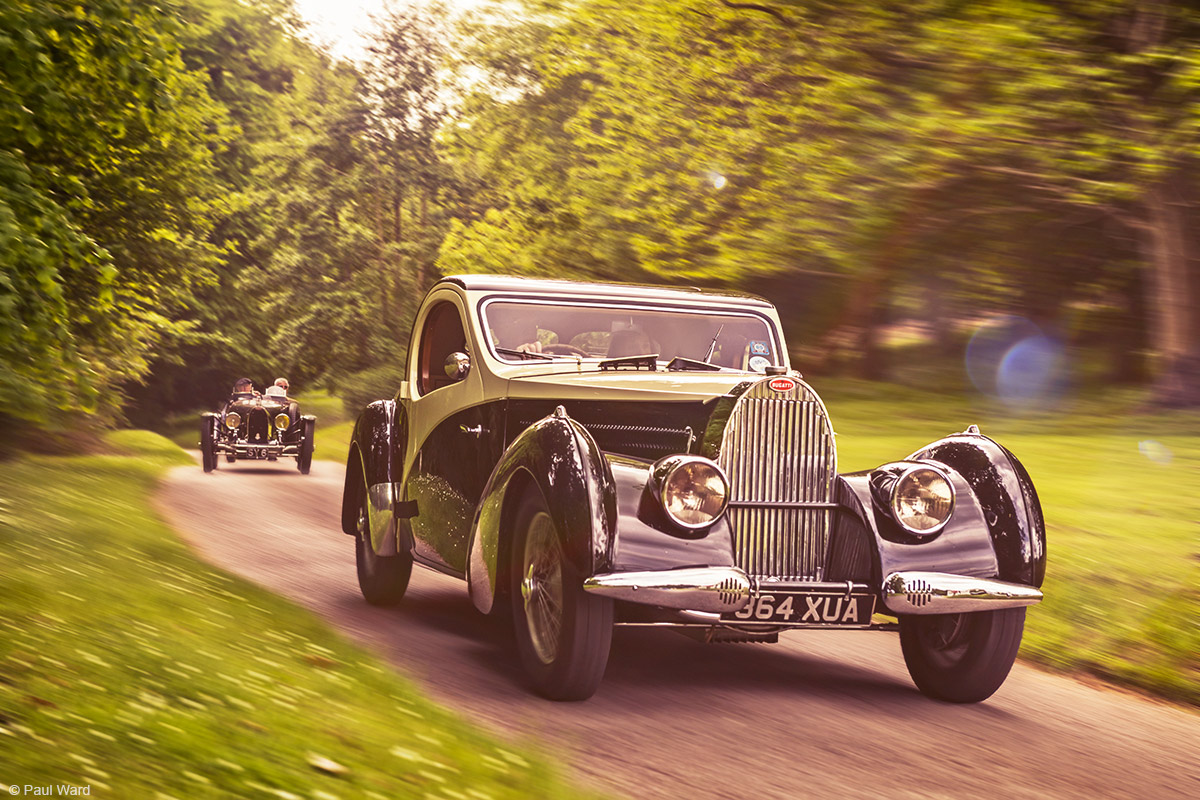Bugatti type 57 by Birmingham car photographer Paul Ward
The original Type 57 was a touring car model produced from 1934 through 1940. It used the 3.3 L (3,257 cc; 198 cu in) engine from the Type 59 Grand Prix cars, producing 135 hp (100 kW). Top speed was 153 km/h (95 mph).
It rode on a 3,302 mm (130 in) wheelbase and had a 1,349 mm (53 in) wide track. Road-going versions weighed about 950 kg (2,090 lb). Hydraulic brakes replaced the cable-operated units in 1938, a modification Ettore Bugatti hotly contested. 630 examples were produced.
The original road-going Type 57 included a smaller version of the Royale’s square-bottom horseshoe grille. The sides of the engine compartment were covered with thermostatically-controlled shutters.
Automobiles Ettore Bugatti was a French car manufacturer of high-performance automobiles, founded in 1909 in the then-German city of Molsheim, Alsace by the Italian-born industrial designer Ettore Bugatti. The cars were known for their design beauty and for their many race victories. Famous Bugattis include the Type 35 Grand Prix cars, the Type 41 “Royale”, the Type 57 “Atlantic” and the Type 55 sports car.
The death of Ettore Bugatti in 1947 proved to be the end for the marque, and the death of his son Jean Bugatti in 1939 ensured there was not a successor to lead the factory. No more than about 8,000 cars were made. The company struggled financially, and released one last model in the 1950s, before eventually being purchased for its airplane parts business in 1963. In the 1990s, an Italian entrepreneur revived it as a builder of limited production exclusive sports cars. Today, the name is owned by the Volkswagen Group
(source – Wikipedia)

